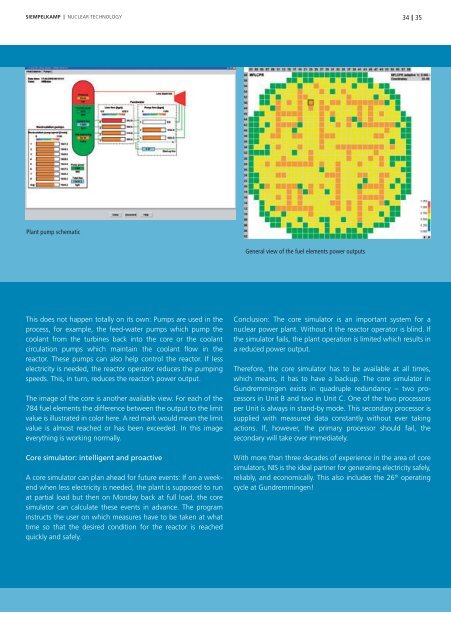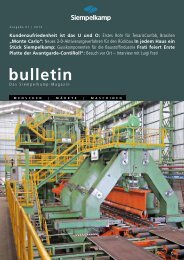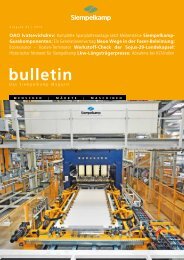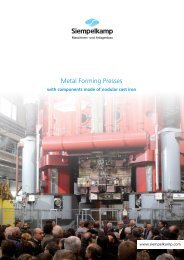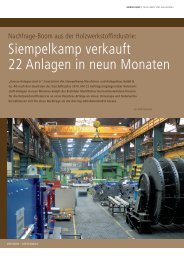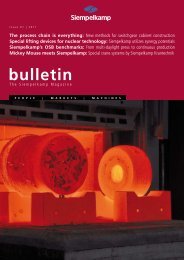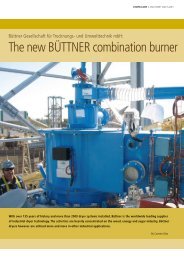Bulletin 2/2010 - Siempelkamp NIS
Bulletin 2/2010 - Siempelkamp NIS
Bulletin 2/2010 - Siempelkamp NIS
Create successful ePaper yourself
Turn your PDF publications into a flip-book with our unique Google optimized e-Paper software.
SIEMPELKAMP | NUCLEAR TECHNOLOGY<br />
Plant pump schematic<br />
This does not happen totally on its own: Pumps are used in the<br />
process, for example, the feed-water pumps which pump the<br />
coolant from the turbines back into the core or the coolant<br />
circulation pumps which maintain the coolant fl ow in the<br />
reactor. These pumps can also help control the reactor. If less<br />
electricity is needed, the reactor operator reduces the pumping<br />
speeds. This, in turn, reduces the reactor’s power output.<br />
The image of the core is another available view. For each of the<br />
784 fuel elements the difference between the output to the limit<br />
value is illustrated in color here. A red mark would mean the limit<br />
value is almost reached or has been exceeded. In this image<br />
everything is working normally.<br />
Core simulator: intelligent and proactive<br />
A core simulator can plan ahead for future events: If on a weekend<br />
when less electricity is needed, the plant is supposed to run<br />
at partial load but then on Monday back at full load, the core<br />
simulator can calculate these events in advance. The program<br />
instructs the user on which measures have to be taken at what<br />
time so that the desired condition for the reactor is reached<br />
quickly and safely.<br />
General view of the fuel elements power outputs<br />
Conclusion: The core simulator is an important system for a<br />
nuclear power plant. Without it the reactor operator is blind. If<br />
the simulator fails, the plant operation is limited which results in<br />
a reduced power output.<br />
Therefore, the core simulator has to be available at all times,<br />
which means, it has to have a backup. The core simulator in<br />
Gundremmingen exists in quadruple redundancy – two processors<br />
in Unit B and two in Unit C. One of the two processors<br />
per Unit is always in stand-by mode. This secondary processor is<br />
supplied with measured data constantly without ever taking<br />
actions. If, however, the primary processor should fail, the<br />
secondary will take over immediately.<br />
With more than three decades of experience in the area of core<br />
simulators, <strong>NIS</strong> is the ideal partner for generating electricity safely,<br />
reliably, and economically. This also includes the 26 th operating<br />
cycle at Gundremmingen!<br />
34<br />
35


